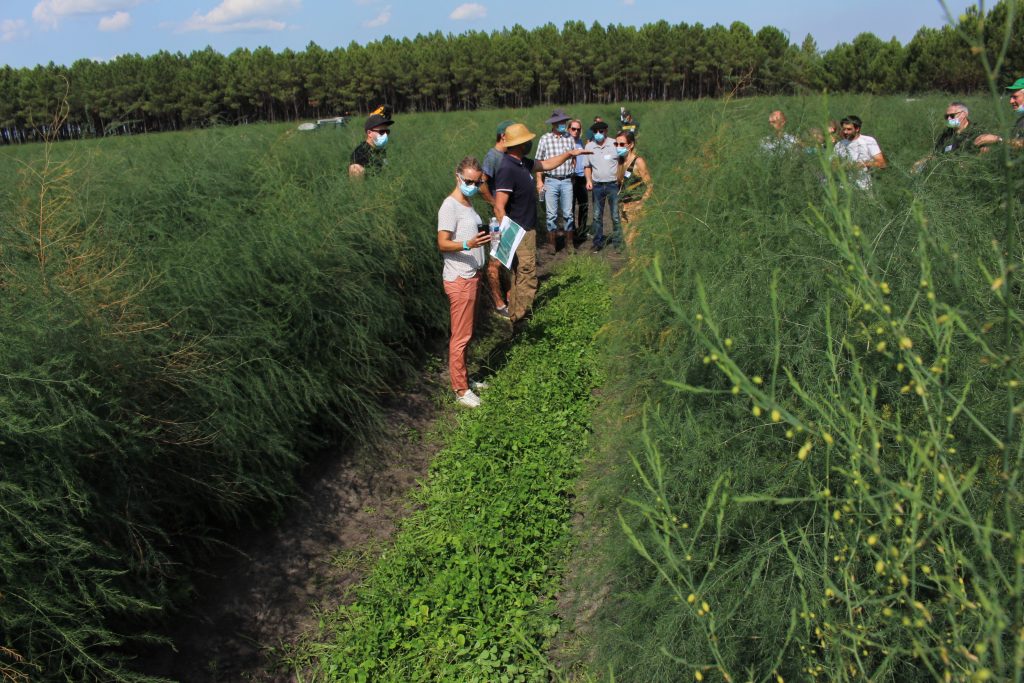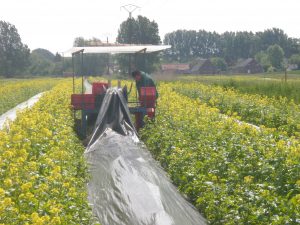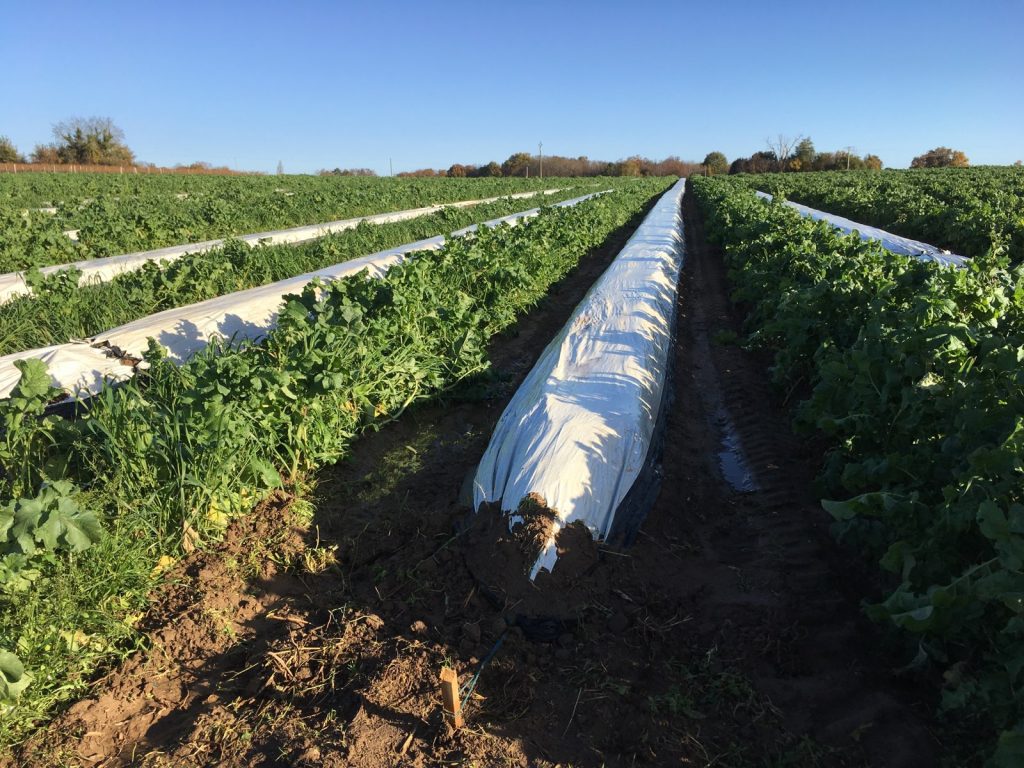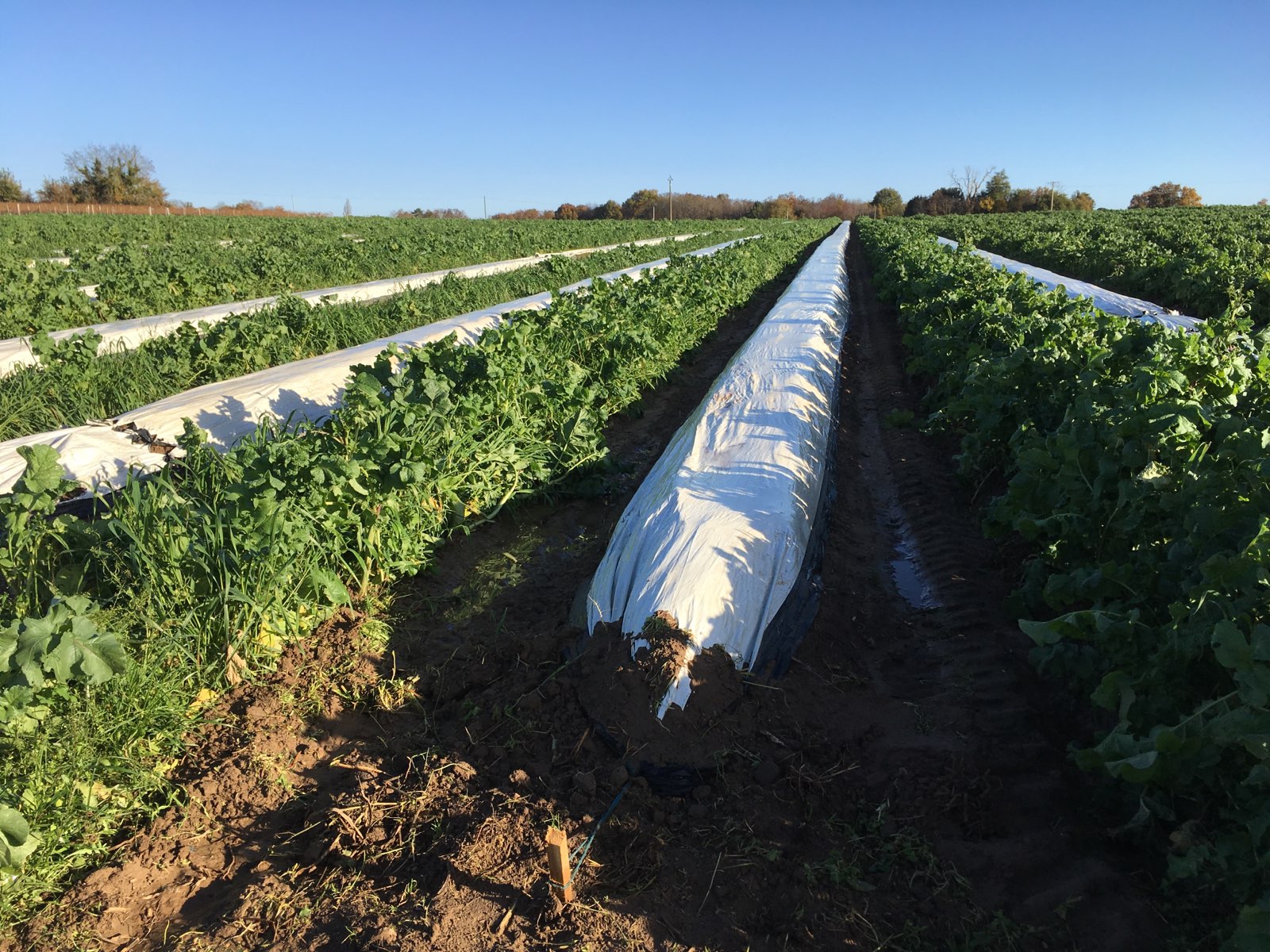Cultivating plant cover
The idea of combatting weed invasions by using other plants is beginning to spread in asparagus farming. Sown in combination with several species, such as common vetch, hairy vetch, oats, rye, faba beans, clover, etc., these plants are referred to as “plant cover”. Plant cover helps limit weed development, improves soil structure and is a source of organic matter. This particular topic was the focus of the 4th technical day of the AOPn Asparagus of France congress.
These plants improve soil structure
This “plant cover” is only implanted in the in-between rows. Such controlled grassing makes for easier passage of machines and harvesters during harvest, especially in clayey soils. As they develop height, they create a micro-climate at the ridge level by reducing the effect of wind. The absence of wind prevents mulch from flying away and greatly reduces the number of twisted spears in green asparagus.
Plant cover also has beneficial effects on compaction and water runoff, and therefore on soil erosion. According to French agronomic data, 60mm of rain in 30 minutes results in 68% runoff, and the loss of 1,120 kg of soil and 80 kg of organic matter per hectare. The presence of plant cover limits runoff to 6%, soil losses to 40kg and lost organic matter to 3kg.
These plants also improve soil structure by bringing organic matter in the form of roots and vegetation after mowing. Their roots fragment the soil, facilitate water exchange and improve soil biodiversity. “The soil is a place where exchanges occur between air, water, minerals and organic matter, which is structured and organised by biological activity,” said Maëlle Depriester, sustainable development councillor of Maine and Loire, underlining the importance of this environment. A living soil is a place of complex biodiversity that can contain billions of bacteria, millions of nematodes and mites, and metres of fungus mycelium per gram of earth, not to mention the multitudes of macrofauna in the form of earthworms, insects, etc.
Producing organic matter in the field
“By adding minerals, carbon and soluble sugars, plant cover provides raw materials for the humus, but, above all, it promotes synthesis,” said Herminie Szitas, technical manager of Jouffray-Drillauda. Plant cover improves or maintains soil structure. It also represents two tons of dry matter, or about 600kg of young humus, per hectare. Its beneficial effects on the structure and life of the soil prepare the soil for new planting in the in-between rows, in the case of replanting. But plant cover is also a crop that needs planting, maintaining and protecting (see box).
Damien Violleau, head of asparagus growing, underlines just how far the possibilities extend: “You have to start de-compacting your head before de-compacting the ground,” he said. Violleau, who is already practising agriculture in living soil, prefers to “produce organic matter directly in the field rather than bringing in compost. Having cover in place also reduces weed invasion, especially if you have successful removal and take care during planting.”
Plant cover in testing

Since 2018, French cooperative Copadax has tested nine forms of inter-row plant cover for asparagus to assess their agronomic effects and weed control effectiveness. The cover is sown after ridge splitting (June-July); then, in some cases, it is pulverised in September/October and destroyed during pre-ridging at the beginning of winter. “The aim is to retain the three most interesting cover types and then make more detailed assessment of their level of recovery and return of organic matter and their impact on performance, which may not be negligible,” said Christophe Labrouche, Copadax’s technical manager. The results of the first few years have already shown the importance of vegetation cover density and soil humidity (even if it means watering), in order to successfully establish the vegetation cover.
Risk of competition and drops in yield

The risk of competition or reduced yields due to the presence of plant cover is very low or even non-existent as long as certain rules are followed. It is essential to be able to irrigate by locating water supplies through drip feed ducts or a ramp equipped with a drop hose system. The introduction of green manure is not recommended if the crop cannot be irrigated because this carries a risk of creating competition for water between asparagus and plant cover, which would penalise future yields. The plant cover must not grow laterally and invade the mound. Hence, it is necessary to control it either via directed chemical weeding or mechanical weeding at the foot of the mound. From the end of July until autumn, the grass grows too tall. Its excessive development reduces the aeration of the crop and limits the entry of light, which promotes stemphillium and rust. Therefore, installing plant cover requires ensuring large gaps between rows, especially for white asparagus. The grass is planted at the end of July at a width of 50cm to reduce its potential for taking soil when ridging-up. Before sowing the vegetation cover, it is possible to bring soil back to the foot of the mound in order to make a reserve of soil for use during ridging. Maintenance is carried out through regular mowing. The number of passes is the same as for soil maintenance, but it requires three times less diesel consumption than for soil work.























